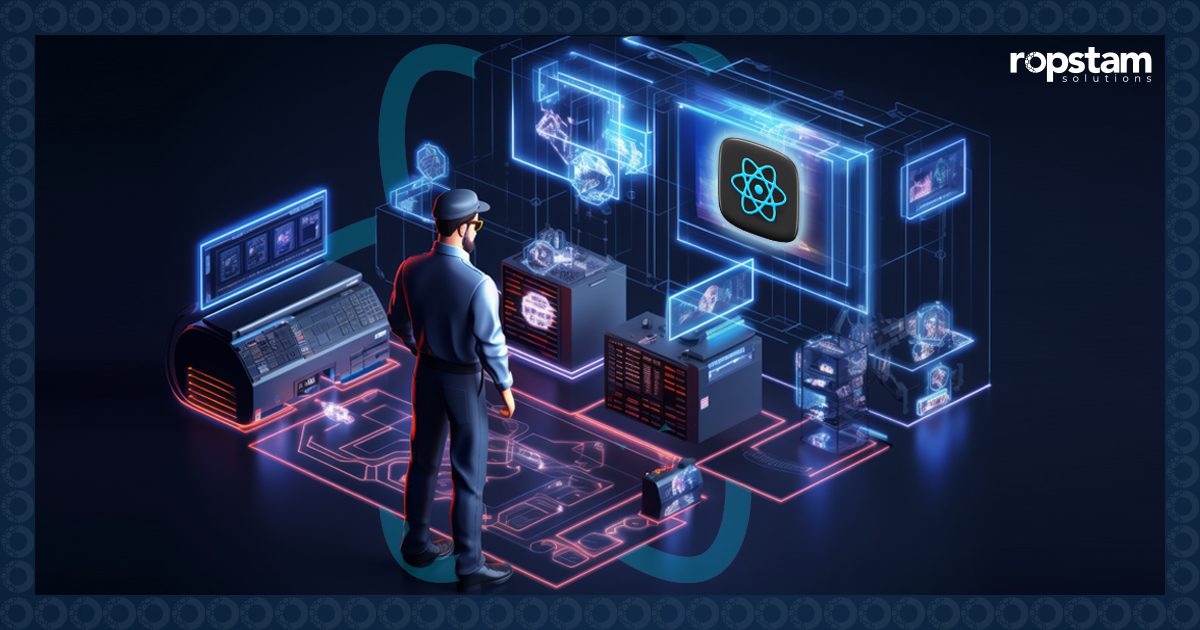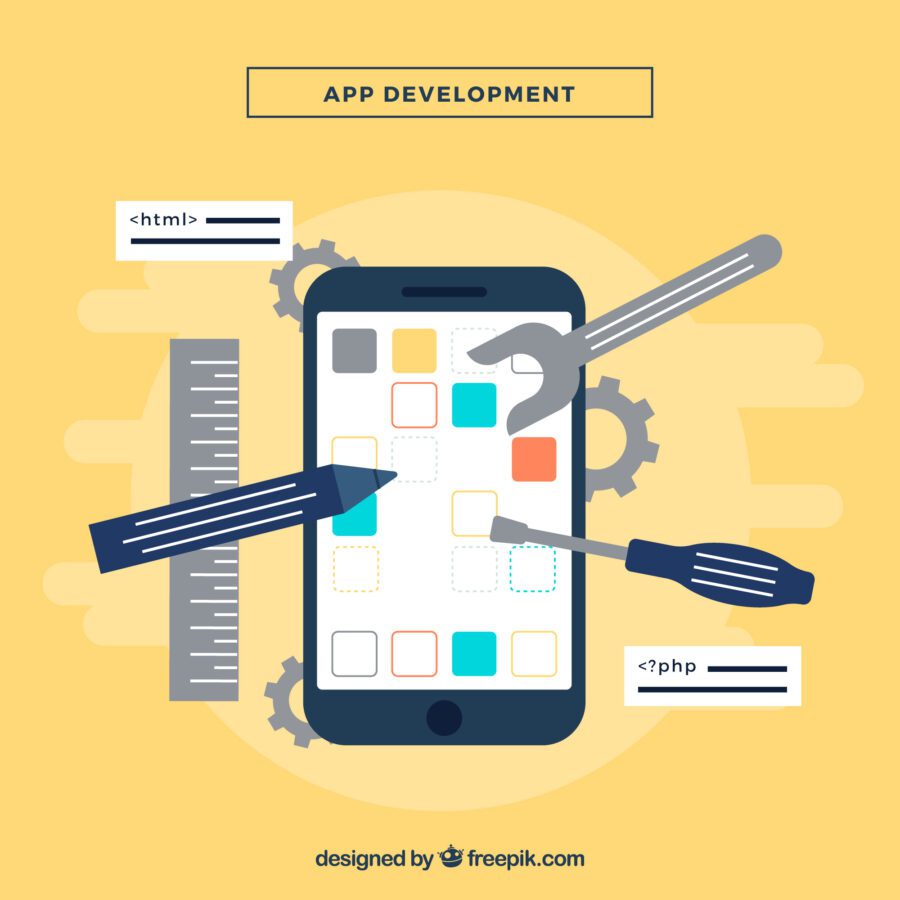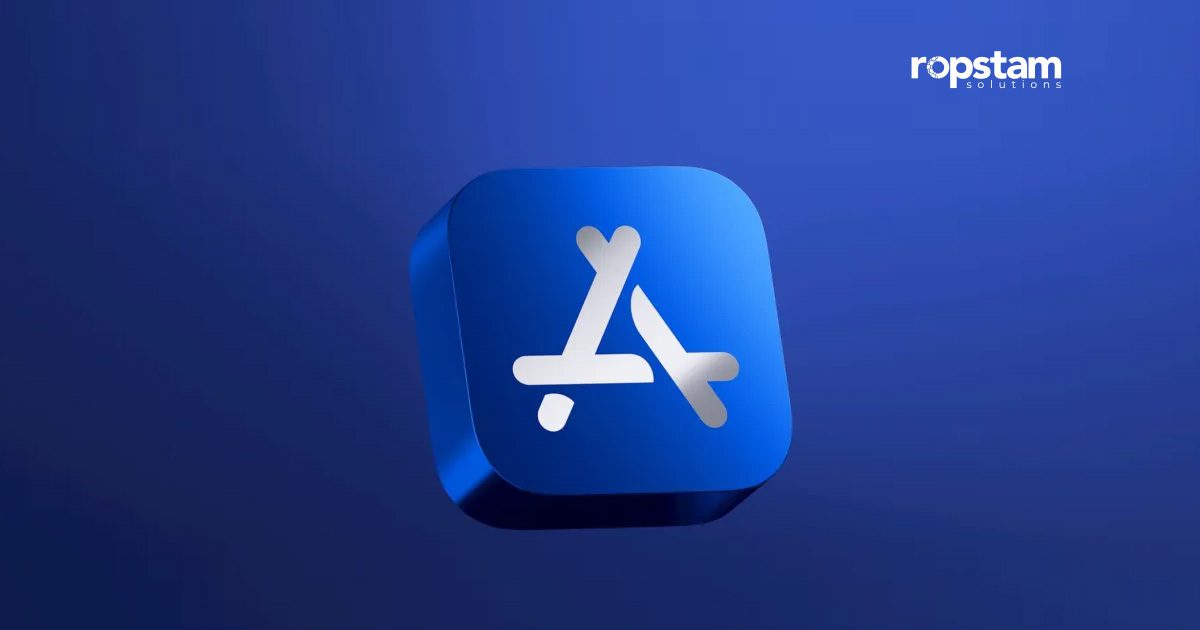The best backend for React is the server-side infrastructure that complements React’s frontend capabilities. This backend receives requests from the React application, processes them, interacts with databases, and sends back the required data. The right backend technology such as Node.js, Django, and Ruby on Rails can significantly enhance your React application’s performance.
To choose the best backend for your React application, consider scalability, performance, developer expertise, community support, and cost. Scalability offers growth potential, performance affects user experience, and developer expertise aligns with your team’s skills. Community support provides resources, while the total cost includes the cost of development, maintenance, and potential scaling expenses.
A backend is important for React for managing data, business logic, and server tasks. React focuses on UI while relying on the backend for data storage, authentication, and complex tasks. A well-designed backend supports scalable, maintainable full-stack web apps by handling databases, security, and data processing before frontend delivery.
This article will shed light on the best backend technologies that pair exceptionally well with React to help you make an informed decision for your next React project.
Leveraging the expertise of our React.js development team, we have compiled a list of the most popular backends to support the React-based front end:
- Node.js
- Django
- Ruby on Rails
- Next.js
- Express.js
- Spring Boot
- Firebase
- Flask
- Prisma
- Laravel
- Heroku
1. Node.js
Node.js is an open-source, cross-platform JavaScript runtime environment and library that allows web applications to run outside of the client’s browser. Built on Chrome’s V8 JavaScript engine, Node.js allows developers to write JavaScript code for both the front end (using React) and the back end. This eliminates the need to learn a separate language for server-side scripting.
Additionally, Node.js boasts an asynchronous, event-driven architecture, making it ideal for real-time applications and microservices. When combined with React, Node.js enables a cohesive development experience with flawless code management and reusability.
Key Features:
- JavaScript everywhere (frontend and backend)
- Non-blocking I/O for efficient API responses
- Large ecosystem of npm packages
- Excellent for real-time applications
- Easy integration with React Native
2. Django
Django is a high-level web framework for Python that promotes fast development and clean, practical design. For those who prefer the elegance of Python, Django offers a high-level web framework that prioritizes rapid development and clean design.
While React focuses on the front end, Django provides a robust backend foundation with built-in features like an admin interface, Object-Relational Mapper (ORM), and robust security features. This combination excels in data-driven applications requiring complex backend logic.
Even more interestingly, Django’s emphasis on developer productivity more or less complements React’s efficient UI rendering, making it a valuable asset in fast-paced web development projects.
Key Features:
- Robust ORM for complex data operations
- Built-in admin interface
- REST framework for API development
- Strong security features
- Scalability for large applications
3. Ruby on Rails
Ruby on Rails, a server-side web framework written in Ruby, embraces a “convention over configuration” approach, simplifying development for projects that benefit from a structured backend. This philosophy aligns well with React, where components provide a pre-defined structure for building user interfaces.
Rails’ focus on developer productivity complements React’s efficient rendering, making it a great choice for rapid application development. Whether you’re building a social media platform or a complex e-commerce store, the synergy between React and Ruby on Rails can significantly accelerate your development process.
Key Features:
- Convention over configuration for faster development
- Active Record for database management
- Built-in testing framework
- RESTful API support
- Rich ecosystem of gems
4. Next.js
Next.js is a versatile React framework that provides the building blocks for creating fast, full-stack web applications. Next.js isn’t just a React framework; it empowers developers with server-side rendering and the ability to generate static websites.
While primarily known for its frontend capabilities, Next.js also offers API routes, allowing it to function as a lightweight backend solution for smaller projects. This makes it an excellent choice for React applications that require server-side rendering for SEO benefits or simple backend functionalities.
Not to mention that with Next.js, you can leverage React’s component-based architecture for both front-end and server-side rendering, fostering a collaborative development experience.
Key Features:
- Server-side rendering for improved performance
- API routes for backend functionality
- Static site generation capabilities
- Automatic code splitting
- Smooth integration with React Native for Web
5. Express.js
Express.js is regarded as a lightweight and flexible Node.js web application framework. Developers often use it in conjunction with Node.js to create robust backend APIs for React applications. Unlike Django or Ruby on Rails, Express.js offers a more minimalist approach, providing a foundation for building custom server-side logic with granular control.
This flexibility makes it popular for projects requiring a tailored backend solution that caters to specific needs. While Express.js might require a steeper learning curve compared to more opinionated frameworks, it empowers developers with maximum control over their backend architecture.
Key Features:
- Minimalist and flexible framework
- Easy to create RESTful APIs
- Middleware support for request processing
- Integrates well with various databases
- Large community and extensive plugins
6. Spring Boot
Spring Boot is a Java-based framework used to create microservices. This Java-based framework excels in creating microservices, a popular architectural pattern for building large-scale and highly scalable applications. When paired with React, Spring Boot provides a robust backend solution that can handle complex business logic and data processing.
Furthermore, Spring Boot’s dependency injection and extensive ecosystem of libraries make it well-suited for managing complex backend functionalities in React projects. Whether you’re building a large-scale e-commerce platform or a sophisticated social networking application, Spring Boot can provide the solid foundation your React front end needs to thrive.
Key Features:
- Dependency injection for modular code
- Embedded server for easy deployment
- Extensive security features
- Microservices architecture support
- Robust data access and transaction management
7. Firebase
Firebase isn’t your traditional backend framework; it’s a comprehensive platform developed by Google specifically for building mobile and web applications. Firebase offers a suite of services, including a real-time database, user authentication, and cloud hosting, making it a compelling Backend-as-a-Service (BaaS) option for React developers.
The real-time capabilities of Firebase’s database perfectly complement React’s reactive nature, allowing for flawless data synchronization and an exceptional user experience. Moreover, its pay-as-you-go pricing model and managed infrastructure make it an attractive option for startups and projects with scaling needs, allowing developers to focus on building their React applications without worrying about their budget.
Key Features:
- Real-time database for instant updates
- Built-in authentication services
- Cloud Functions for serverless backend logic
- Analytics and crash reporting
- Push notifications support
8. Flask
Flask is a Python microframework that steps in to provide a minimalist foundation for building web applications. While Django offers a comprehensive framework, some developers might prefer a more lightweight approach like Flask.
Flask’s simplicity aligns well with React’s component-based architecture, allowing developers to construct highly customizable full-stack solutions.
Flask doesn’t enforce a specific structure or conventions, giving developers more control over their backend code. This flexibility makes Flask a popular choice for smaller-scale projects or situations where a customized backend solution is required.
Key Features:
- Lightweight and flexible framework
- Easy to set up and use
- RESTful request dispatching
- Support for secure cookies
- Extensive documentation and community support
9. Prisma
Prisma ORM is a modern ORM that simplifies database management for application developers and includes tools like Prisma Client, Prisma Migrate, and Prisma Studio.
Prisma has emerged on the horizon as a next-generation Object-Relational Mapper (ORM) that simplifies database interactions for developers using Node.js backends for React applications. Prisma offers type-safe database access, migrations, and automatic schema generation, streamlining development workflows and reducing boilerplate code.
While not a complete backend solution on its own, Prisma integrates smoothly with Node.js backends, allowing developers to focus on building the core functionalities of their React applications without getting bogged down in complex database interactions.
Key Features:
- Type-safe database access
- Auto-generated migrations
- Intuitive data modeling
- Support for multiple databases
- Real-time subscriptions
10. Laravel
Laravel is a feature-rich and elegant web application framework with an expressive and elegant syntax. Those who are well-versed with PHP will like this framework a lot. When used as a backend for React applications, Laravel provides a robust set of tools for authentication, routing, database management, and more. This combination excels in projects that require a feature-rich backend with a dynamic React frontend.
Laravel’s built-in features like Blade templating and extensive community resources streamline development and ensure a smooth integration with React. Whether you’re building a complex content management system (CMS) or a dynamic e-commerce platform, Laravel’s comprehensive backend capabilities, paired with React’s dynamic front end, can create a powerful and user-friendly web application.
Key Features:
- Elegant syntax for rapid development
- Built-in authentication and authorization
- Eloquent ORM for database interactions
- Task scheduling for background jobs
- Robust routing system
11. Heroku
Heroku isn’t a backend technology itself but a cloud platform as a service (PaaS) that simplifies the deployment and scaling of various backend technologies commonly used with React. With Heroku, developers can focus on building their React applications and backend logic, leaving the server management and infrastructure concerns to Heroku’s robust platform.
Heroku’s enhanced deployment process and support for numerous programming languages make it a popular choice for hosting React applications with diverse backend solutions. Whether you’re using Node.js, Python, or Ruby on Rails for your backend, Heroku offers a smooth deployment experience, allowing you to get your React application up and running quickly and efficiently.
Key Features:
- Easy deployment and scaling
- Supports multiple programming languages
- Add-ons for extended functionality
- Continuous integration and delivery
How to choose the best backend for React?
Selecting the right backend technology for your React application is a critical decision that can significantly impact your project’s success. The backend serves as the foundation of your application, handling data processing, storage, and business logic. To ensure you make an informed choice, consider the following key factors:
1. Scalability
Consider your project’s growth potential and choose a backend that can handle increasing loads. Scalability is crucial for applications that expect to grow in user base or complexity over time. Look for technologies that offer horizontal scaling (adding more machines) and vertical scaling (adding more resources to existing machines).
For instance, Node.js with Express.js is known for its ability to handle many concurrent connections, making it suitable for applications that need to scale quickly.
2. Performance
Performance directly affects user experience and can impact your application’s success. Consider factors such as request handling speed, database query efficiency, and overall response times.
For example, Node.js is known for its non-blocking I/O, which can lead to high performance in I/O-intensive applications. Conversely, Django, built on Python, might offer better performance for CPU-intensive tasks due to Python’s strong data processing capabilities.
3. Developer expertise
The backend technology you choose should align with your team’s expertise or be something they can quickly learn. If your team is already proficient in JavaScript, Node.js might be a natural choice. If they’re more comfortable with Python, Django could be the way to go. Also, consider the availability of skilled developers in the market if you plan to expand your team in the future.
4. Community support
A strong community means better resources and faster problem-solving. Look for technologies with active communities, comprehensive documentation, and a wealth of third-party libraries or modules. For instance, both Node.js and Django have large, active communities that continually contribute to their ecosystems. This support can be invaluable when you encounter issues or need to implement new features quickly.
5. Cost
Consider both initial development costs and long-term maintenance expenses. This includes not just licensing fees (if any) but also hosting costs, potential scaling expenses, and developer salaries.
Open-source technologies like Node.js or Django can reduce licensing costs but may require more configuration and maintenance. Managed services like Firebase can reduce initial setup time and maintenance needs but might become costly as your application scales.
What is the importance of the backend for React?
The backend plays a crucial role in React applications by providing the necessary data management, business logic, and server-side operations. While React excels at creating dynamic user interfaces, it relies on a robust backend to handle data persistence, authentication, and complex computations.
A well-designed backend complements React’s frontend capabilities, enabling the creation of full-featured web applications. It manages database operations, implements security measures, and processes data before sending it to the React front end. This separation of concerns allows for better scalability and maintainability of the application as a whole.
Is React used for backend or front-end development?
React is primarily a frontend library used to build user interfaces for web apps. It’s designed to create interactive, responsive, and efficient UI components that run in the user’s browser. React’s component-based architecture and virtual DOM make it excellent for developing complex front-end applications.
While React itself is not used for backend development, it’s often paired with various backend technologies to create full-stack applications. This combination allows developers to leverage React’s powerful UI capabilities while relying on dedicated backend frameworks or services to handle server-side logic and data management.
Which database is best for React?
The choice of database for a React application depends on the specific project requirements. However, MongoDB is often favored due to its flexibility and JSON-like document structure, which aligns well with React’s JavaScript nature. Other popular options include PostgreSQL for relational data, Redis for caching, and Firebase for real-time applications.
Is Django a good backend for React?
For many backend developers, Django is indeed a good backend choice for React applications. Its robust features, including a powerful ORM, and REST framework, complement React’s frontend capabilities well.
Is PHP a good backend for React?
PHP can be a suitable backend for React applications, especially when using modern PHP frameworks like Laravel or Symfony. These frameworks offer robust features for building APIs that can easily integrate with React frontends. PHP’s widespread use makes it a preferred choice, particularly for projects with existing PHP infrastructure.
Get web development services from Ropstam Solutions
We all know that React is one of the most pre-eminent front-end frameworks preferred by countless front-end developers. With a suitable backend technology, you can turn your front end into a full-stack project. When it comes to selecting the ideal backend for your React project, you must evaluate a host of factors such as cost, project requirements, technical expertise of your team etc.
At Ropstam, we have a team of award-winning web developers with expertise in React.js. Boasting a decade of experience and a portfolio of successfully delivered projects, our pre-vetted web developers are ready to help you with your next project. Contact us by sending us an email or giving us a call today to witness the magic firsthand.














